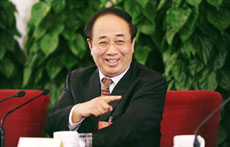Wuxi finds growth in refocused sectors
By Qian Yanfeng (China Daily)
Updated: 2011-03-10 08:41
BEIJING - Can you achieve phenomenal economic growth by closing more factories than you open?
Wuxi Mayor Mao Xiaoping says, "yes you can".
"The achievements were gained by shifting our emphasis toward developing technology and innovation-driven industries that have higher added value instead of the energy-consuming and environmentally polluting sectors," Mao, who is also a deputy of the National People's Congress, told China Daily on the sidelines of the ongoing session of the country's top legislature.
The city now boasts a number of national and world-leading companies in sectors including renewable energy, bio-pharmaceuticals and integrated circuits. Wuxi-based Suntech Power, for instance, is the world's largest manufacturer of solar cells.
As a cradle of China's industrial resurgence in the early 1900s, and then part of the "South Jiangsu Model" featuring village and township industry at the end of the 1970s, Wuxi has been home to some of the nation's most advanced and developed manufacturing industries, including textiles, printing, dyeing and chemicals.
Those industries have brought unprecedented wealth to the region in the past two decades, but at a high cost. Growing environmental problems in past years, such as the algae outbreak in 2007 in Taihu Lake, China's third largest freshwater lake, have sounded a serious warning that the old pattern of growth simply cannot be sustained.
Thanks to recent industrial restructuring, the city lowered its energy consumption per unit of GDP by more than 20 percent during the 11th Five-Year Plan (2006-2010) period and its levels of sulfur dioxide and chemical oxygen demand, a measurement of water pollution, were reduced by 32 percent, double the national average.
Its wastewater treatment standard is now among the country's highest, and 95 percent of the domestic sewage is treated.
The city also pumped 10 billion yuan ($1.5 billion) in each of the last three years into the protection of water quality.
At a time when many Chinese cities, including Wuxi, are setting ambitious plans to develop eco-cities in the name of pursuing low-carbon and greener development, Mao remains level-headed about it.
"More than 30 Chinese cities have now said they want to develop eco-cities. But China still lacks a system of evaluation standards in the sector, without which our pursuit for eco-cities might just become a formality and fail to produce any concrete results," Mao said.
Mao has submitted a proposal to the National People's Congress asking the central government to set up a national mechanism to coordinate and regulate nationwide strides in creating eco-cities while promoting the establishment of a set of standards and regulations based on Chinese characteristics.
"Because of the lack of a mature system and the difficulty in putting low-carbon technologies into use, we should bear in mind that eco-cities in China are still in the preliminary stage," he added.
Situated north of Taihu Lake next to a wide swath of wetlands, the 2.4-sq-km eco-city in Wuxi is modeled after Stockholm's Hammarby Sjostad and will provide a green lifestyle for the town's 20,000 residents.







